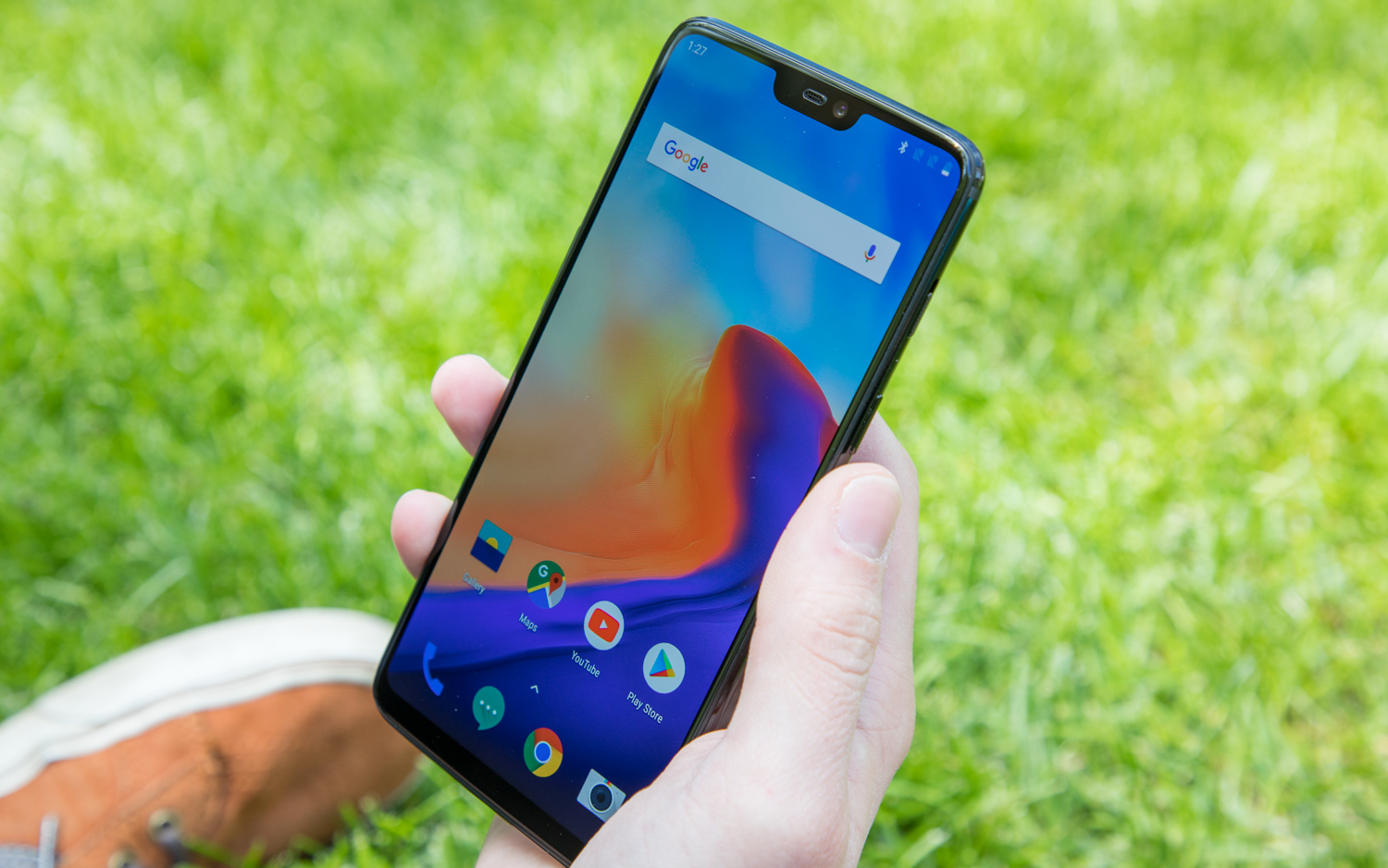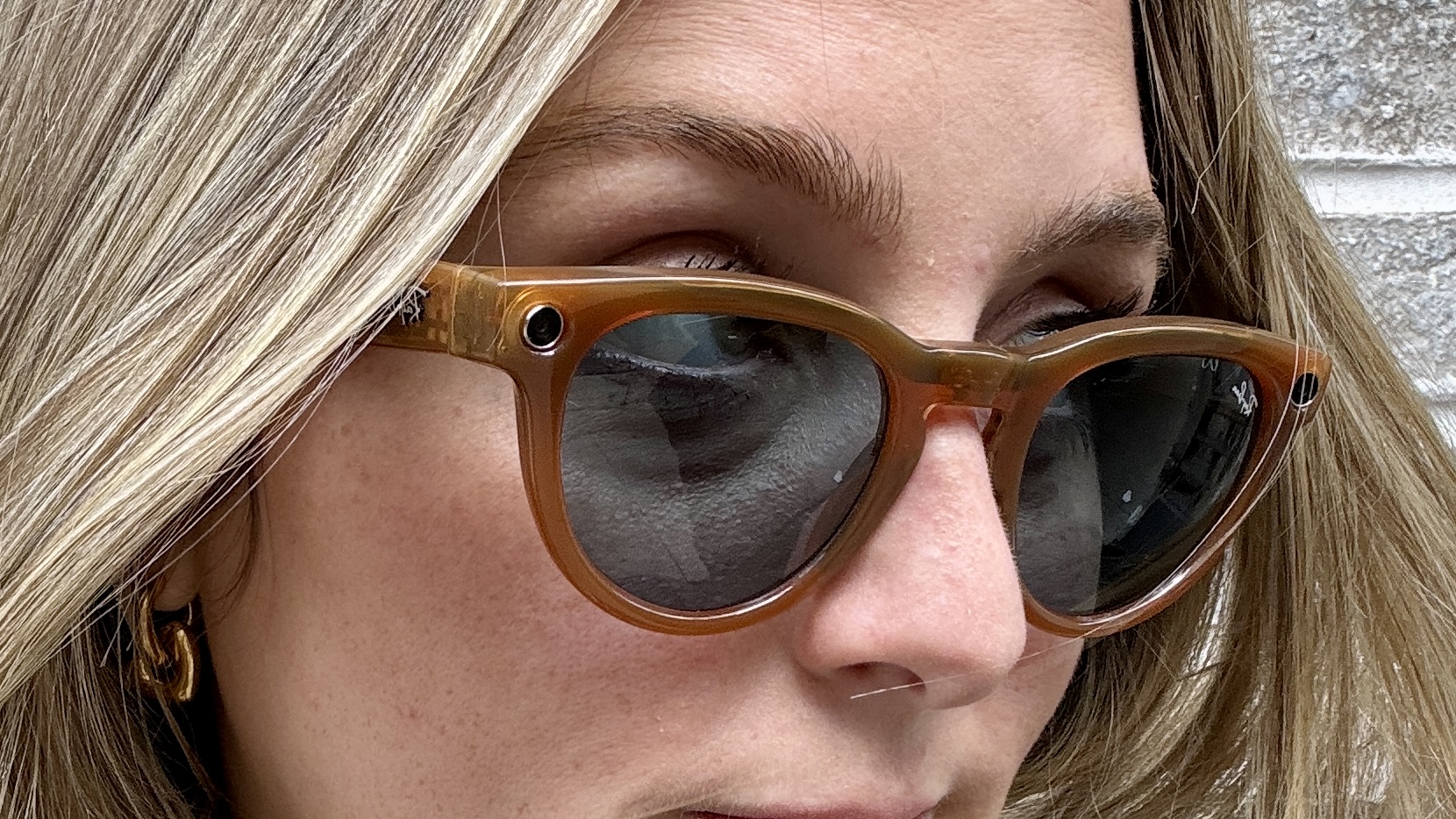Tom's Guide Verdict
No phone maker has done a better job delivering value for money than OnePlus, and the new feature-packed OnePlus 6 is true to that goal.
Pros
- +
Class-leading display
- +
Unrivaled performance
- +
Intuitive gestures
- +
Innovative glass design
- +
Super-fast charging battery
- +
Affordable price relative to premium phones
Cons
- -
A little too big
- -
Battery life has taken a hit
- -
Won't work on Verizon or Sprint
Why you can trust Tom's Guide
The OnePlus 6 is like a certain NBA team whose return trip to the Finals is guaranteed just by bringing back the same players. It was a pretty safe bet that as long as OnePlus made the requisite annual updates, like improving the device's processor and dual cameras, the OnePlus 6 (starting at $529) would be another hit.
Sure enough, OnePlus has defined this year's flagship killer, with all the performance and features you could possibly want from any smartphone, rolled into a package that costs hundreds less than top-tier offerings from Apple, Samsung and Google. And while the company's value-for-money trick might not be as surprising or special the fifth time around, cash-strapped buyers can't argue with the results.
Update July 2: OnePlus will be offering a red version of the OnePlus for $579 that includes 128GB of storage and 8GB of RAM. It goes on sale July 10.
Price and Availability
The OnePlus 6 begins shipping on May 22, and you can preorder it now direct from the company. The base variant, priced at $529 and clad in a Mirror Black finish, is $30 more expensive than the cheapest OnePlus 5T was, but comes with the same 6GB of RAM and 64GB of storage.
Coughing up an extra $40 will grant you 8GB of RAM and double the space for media and apps. This configuration is available in the same guise as the cheaper one, as well as a matte-like Midnight Black and, as of June 5, a special edition Silk White colorway finished off with a hint of rose gold. Finally, topping the food chain is a variant with 8GB of RAM and 256GB of storage, exclusively sold in Midnight Black and going for $629.
Like its predecessors, every OnePlus 6 is unlocked and compatible with GSM networks, including AT&T and T-Mobile. And if you're toying with picking one up yourself, a word to the wise: OnePlus makes limited quantities of all its phones, and it sells just one model at a time. Although the company has assured us it is building more of the OnePlus 6 than it did the 5T, that phone was discontinued after just five months — so don't say we didn't warn you.
OnePlus 6 Specs
| Price | $529/$579/$629 |
| OS | Android 8.1 Oreo with OxygenOS |
| Screen Size (Resolution) | 6.28-inch AMOLED (2280 x 1080) |
| CPU | Qualcomm Snapdragon 845 |
| RAM | 6GB/8GB |
| Storage | 64GB/128GB/256GB |
| microSD Slot | No |
| Rear Camera | Dual: 16 MP (f/1.7) with OIS; 20 MP (f/1.7) |
| Front Camera | 16 MP (f/2.0) |
| Battery Size | 3,300 mAh |
| Water Resistance | None |
| Size | 6.13 x 2.97 x 0.30 inches |
Get instant access to breaking news, the hottest reviews, great deals and helpful tips.
Design: Big and beautiful
After several years of fitting its handsets with aluminum, OnePlus has transitioned to Gorilla Glass 5 all around with the OnePlus 6. Skeptics might fear a step backward in durability, but OnePlus says it has lavished the same attention on these glass backs as it had with the metal on any previous OnePlus device, and the effort shows.
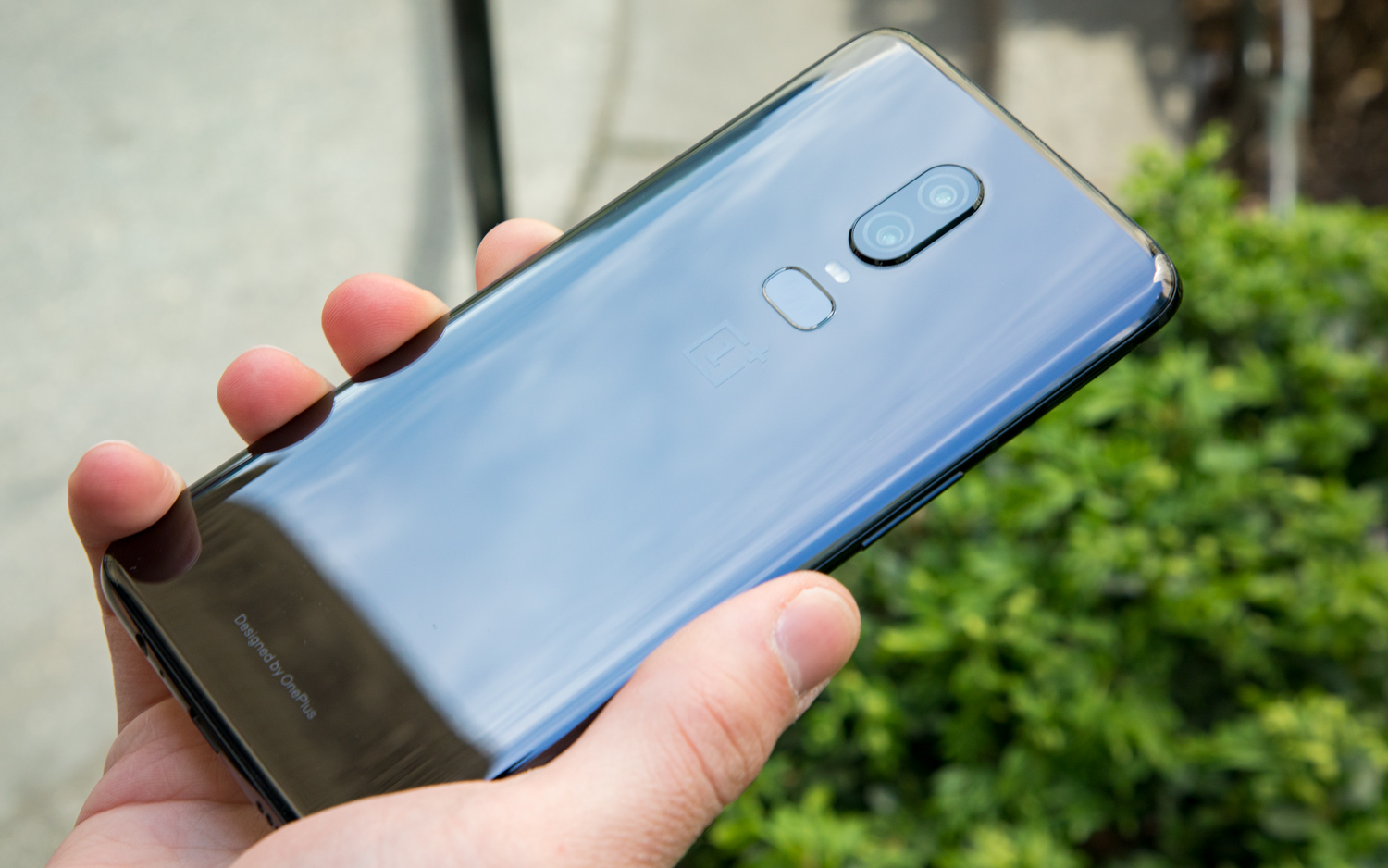
In fact, the company specially treated each glass on each colorway independently, to emulate different materials. For example, our Mirror Black model evokes the depth and reflectivity of polished ceramic, while the Midnight Black version approaches the matte sheen of the OnePlus 5 or 5T. OnePlus' designers actually perforated the surface of the glass on the latter model with imperceptible holes to reveal the layer of film beneath.
The attention to detail is definitely appreciated, especially for such a relatively inexpensive handset. And because this is a OnePlus device, the thoughtful touches don't stop there. The company's handy Alert Slider returns on the OnePlus 6, though it's migrated from the left to the right edge since we last saw it. Better yet, users clutching onto their trusty wired headphones can breathe a sigh of relief, as the headphone jack has been miraculously spared.
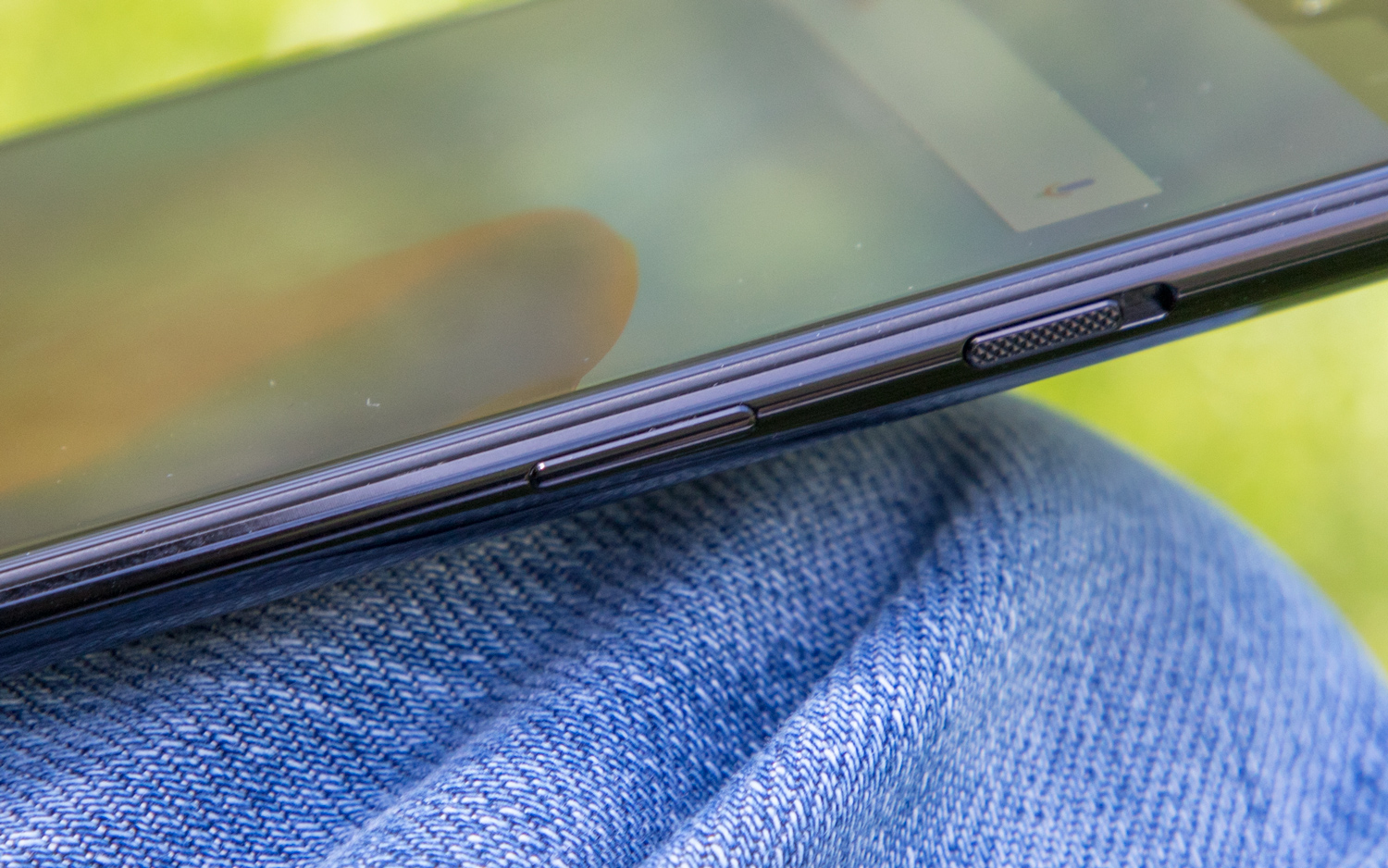
However, OnePlus could go only so far working with glass. The OnePlus 6 lacks the heft or density of metal, nor does it feel quite as solid as the 5T. And despite no longer employing metal, OnePlus hasn't used that opportunity to enable wireless charging, a feature that has cropped up on a growing number of flagship phones over the past year. True water resistance also remains absent from OnePlus' devices.
The other major design change pertains to the OnePlus 6's notch, an element OnePlus publicized itself when it confirmed the notch's existence back in March. While I'm personally indifferent to this year's defining phone trend, I like that OnePlus owned up to it instead of playing it down. And truthfully, I didn't find it terribly obtrusive after spending a week with the phone. But if you remain vehemently opposed to a feature that is becoming increasingly difficult to avoid, there's a setting that hides the notch by painting the status bar black.
Those drawn to the OnePlus 6 for its no-compromise approach to features may find themselves compromising quite a bit when it comes to ergonomics.
My biggest gripe about the OnePlus 6's design actually does pertain to the notch, but only tangentially. Many phone makers have defended the notch because it increases usable screen space. In theory, this should allow for smaller devices with larger displays, much like the shift to 18:9 displays did. The LG G7 ThinQ, for example, shoehorns a massive 6.1-inch panel within a relatively compact footprint because it combines a notch with minimal bezels. This gives the user a ton of room to work with, while simultaneously making the whole thing easier to hold.

The 6.28-inch OnePlus 6, on the other hand, sports almost exactly the same dimensions as the notch-less 5T. The result is a handset with a screen that is much larger than it needs to be, and a device that I reckon many users will find clumsy, if not impossible, to cradle one-handed. Slap one of OnePlus' fine cases on the OnePlus 6, and it becomes just as tall and a bit wider than Samsung's 6.3-inch Galaxy Note 8. Those drawn to the OnePlus 6 for its no-compromise approach to features may find themselves compromising quite a bit when it comes to ergonomics.
Display: Stunning at any price
Of all the qualities that makes the OnePlus 6 remarkable for its price, its 6.28-inch AMOLED display might be the most compelling. This is a gorgeous panel eclipsed only by those in Samsung's latest flagships, which offer better brightness and pixel density. But the gap isn't as wide as you might assume.
To put what OnePlus has achieved into perspective, most phones at the $500 level, like the Honor View 10, the Essential Phone and the upcoming Asus ZenFone 5Z, come equipped with LCD screens. They tend to get the job done, but they're never anything special. The same can be said for even pricier devices like the LG G7 ThinQ and Sony Xperia XZ2, which are on the bleeding edge of LCD technology with HDR support and even more radiant backlighting.
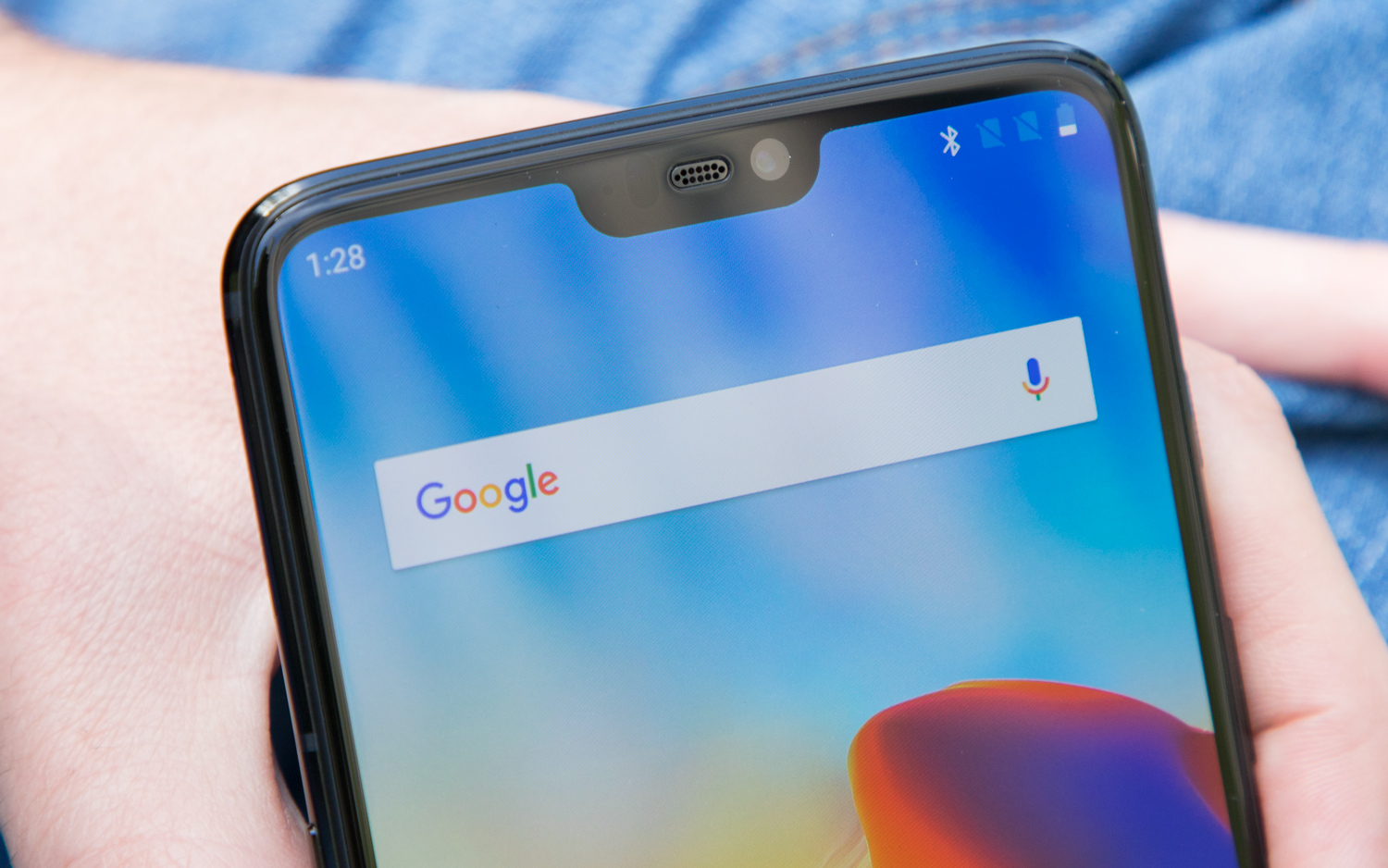
Sat next to the OnePlus 6, any of those LCD handsets appear a generation behind. Darker scenes approximate a pastiche of grays on these phones, when they should be black. Hues that should look juicy and saturated are hazy and washed out. And if you think the OnePlus 6's representation of your favorite movie plays up the color a little too strongly, you can change the display profile to a more realistic sRGB or DCI-P3 palette.
The OnePlus 6 delivered a peak full-screen brightness of 574 nits when measured with our light meter, which is dead even with the iPhone X and not far off the Galaxy S9's 603 nits. It's also a vast improvement over the 394 nits we measured last year on the OnePlus 5T.
Regarding color reproduction, the OnePlus 6 registered a 240.3 color gamut within the sRGB spectrum, which is actually more than the Galaxy S9 at 220 percent — though those results will differ significantly if you opt for one of the alternate color profiles.
The OnePlus 6's display proved to be not only vivid but properly calibrated, with a Delta-E accuracy score of 0.39 (numbers closer to zero are better). Again, this was identical to the Galaxy S9, which notched a 0.40 result.
Camera: Good, but not great
Like OnePlus' previous phone, the OnePlus 6 relies on a pairing of 16- and 20-megapixel lenses at the back to handle photos. Both cameras have a wide f/1.7 aperture, and employ the same wide-view angle. That means you don't get the benefit of a telephoto perspective or optical zoom on that secondary lens like you do on either the iPhone X or the Galaxy S9+. But on the plus side, low-light performance should be better than it was on previous OnePlus phones, thanks to that larger aperture.
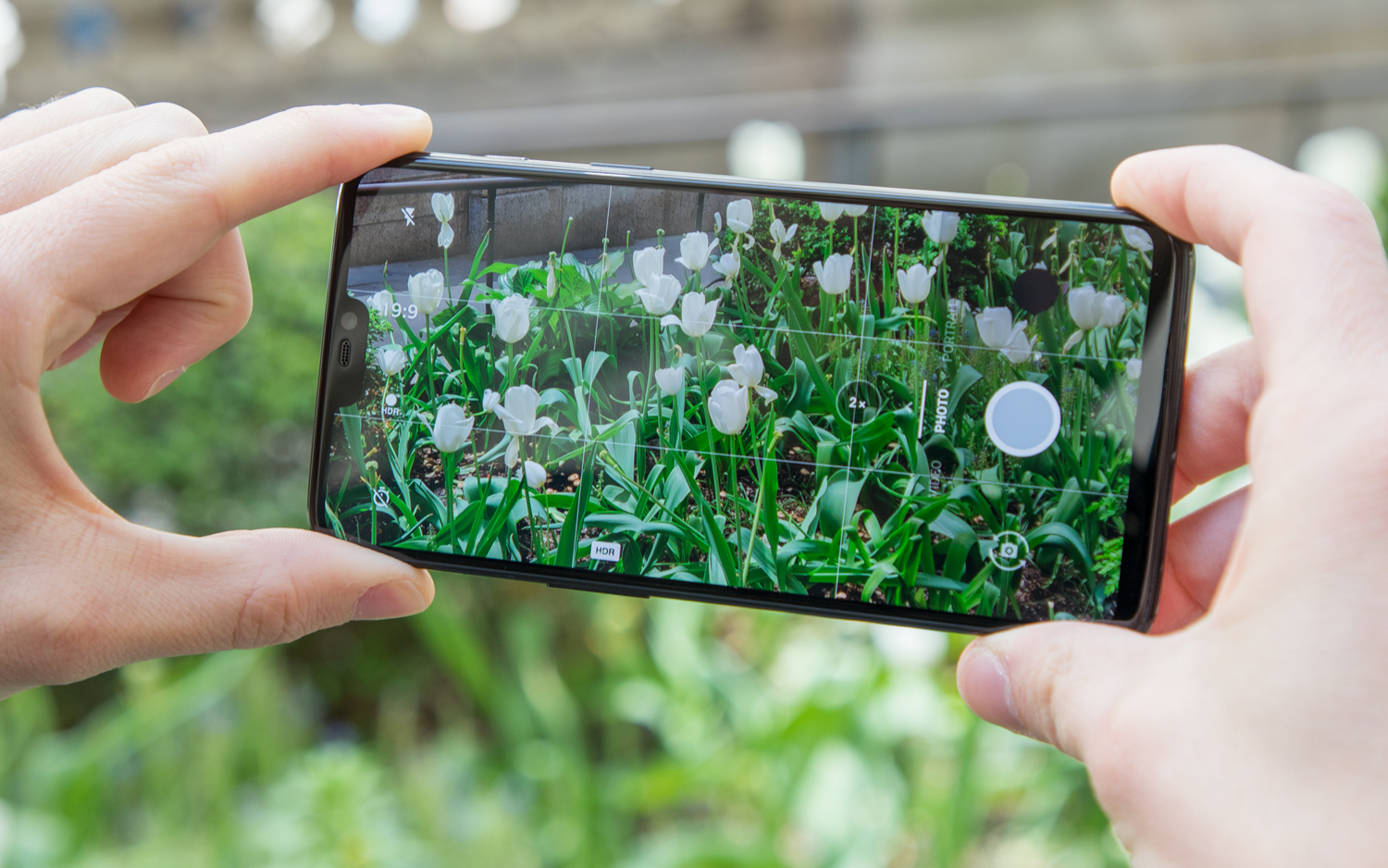
In fact, the two major improvements OnePlus made to its camera system were specifically designed to capture better shots in dim scenarios. The main 16-MP shooter is now equipped with optical-image stabilization, which will help mitigate blur when the camera needs to slow down the shutter speed to let more light in. The new primary image sensor is also 19 percent larger than that of the OnePlus 5T.
Additionally, OnePlus has leveraged the power of Qualcomm's Spectra 280 image signal processor to enable super slow-motion video at 480 frames per second (fps) and 720p resolution. While that's half as slow as the Galaxy S9's 960 fps mode, on the OnePlus 6 you can record for up to a minute. The Galaxy S9 can capture only 960 fps in very short bursts, like 1.2 seconds, played back in real time over a 6-second clip.
On a dreary morning in New York City, the OnePlus 6 delivered a balanced shot with strong contrast that compared favorably to what the Pixel 2 XL mustered. When you zoom in, however, Google's phone begins to show why it's our favorite for photography. The Pixel 2 XL exhibits more realistic greens, less noise and less distortion at the fringes. The Pixel's rendition is a fair bit sharper as well, something particularly evident in the buildings in the distance.
In our office, the OnePlus 6 composed a brighter still-life scene than the Pixel 2 XL, though that came at the expense of some clarity. OnePlus' device fails to properly convey the texture of the leaves, partially due to a lack of sharpness, and partially because of inferior dynamic range. The clouds through the window are also blown out on the OnePlus 6, which highlights the strength of Google's HDR processing.
A low-light test demonstrated OnePlus' enhancements weren't just lip service. While the OnePlus 6's shot is perhaps a hair darker, there's so much less noise in comparison to what the Pixel 2 managed that it's really no contest. An impressive feat, considering the Pixel 2's excellent low-light capabilities were primarily the reason why it earned the top spot in our photo comparison against the iPhone X and Galaxy S9+.
When it comes to shallow depth-of-field portraits, however, OnePlus still has work to do. The Pixel 2 XL handily outperformed the OnePlus 6 when I snapped photos of my colleague Paul, with crisper detail, more accurate white balance and impressive dynamic range that artfully reined in the highlights and lowlights. The OnePlus 6 was completely thrown off by the intensity of the fluorescent lighting in our office, misinterpreted Paul's skin tone and seemed ever so slightly blurrier all around.
I called upon both device's portrait modes a second time to take pictures of a flower, and despite having one less lens on the back, the Pixel 2 XL pulled out yet another gorgeous bokeh-effect shot. The OnePlus 6 applied less blur to the background and generally lacked the warmth that made the lavender burst from the frame in the image captured by Google's flagship.
Rounding out the comparison is a selfie from the OnePlus 6's front-facing 16-MP camera that is oddly flat and devoid of contrast. The Pixel 2 XL's shooter may be half the resolution, but there's no doubt it produced a more realistic portrait, visible in the texture of my skin as well as the color of my sweater.
Ultimately, while the OnePlus 6's photography won't top the Pixel 2's in every scenario, it will surprise you from time to time. Google's flagship begins at $649 for the 5-inch model, which has identical cameras to the $849 Pixel 2 XL we tested here. That translates to a $120 difference between the base models of OnePlus' and Google's phones. The Pixel's photos are surely better, but whether they're worth at least $120 more is debatable.
Either way, owners will appreciate that OnePlus continues to make its cameras better after release. The OnePlus 6's software was updated in June to include Google Lens. Previously, users who wanted to summon Google Lens had to take a picture, then analyze it inside the Google Photos app. Now, that can be done while using the camera in real time.
Google Lens appears as a new mode alongside Portrait, Panorama and the rest. Owners can either sideload the new camera APK now or wait for a future OTA update, which will discreetly add the feature.
Performance: Blazing fast
Armed with a Qualcomm Snapdragon 845 processor with Adreno 630 graphics, as well as either 6GB or 8GB of RAM depending on the model, the OnePlus 6 is up there with the year's fastest phones. Of course, those specs apply to almost every 2018 Android flagship, so it was interesting to find the OnePlus 6 outperform its rivals by a respectable margin in benchmarks.
In Geekbench 4, which measures overall system performance, our 8GB OnePlus 6 turned in a score of 9,098 — well beyond the LG G7 (8,566) or the Galaxy S9+ (8,295), both of which feature less RAM. In fact, the OnePlus 6 gets closer to the A11 Bionic-powered iPhone X's 10,357 score than any other handset we've tested thus far.
3D Mark's Sling Shot Extreme OpenGL ES 3.1 graphics test produced similarly impressive results, with the OnePlus 6 reaching 5,124. Again, that's higher than both the LG G7 at 4,201 and the Galaxy S9+ at 4,634.
MORE: Best Smartphones on the Market Now
How can the OnePlus 6 be so much faster with almost identical hardware? It might have something to do with clever under-the-hood tweaks. OnePlus tells us its latest phone renders on-screen content differently than most Android devices, by neglecting to draw layers that aren't visible to the user. Because of this, the company has cited gains of up to 10 percent faster app- loading times. That may explain why the OnePlus 6 not only tests but feels a hair quicker than nearly every phone out there.
The OnePlus 6 rarely wavered in its performance, no matter how we pushed its limits. Whether it was highly demanding multiplayer titles like PlayerUnknown's Battlegrounds Mobile or crushing a succession of tasks in split-window mode, the phone handled almost everything without breaking a sweat.
I say "almost" because our real-world test of transcoding a 2-minute 4K video into 1080p via the Adobe Premiere Clip app seemed to trip the OnePlus 6 up. Many premium handsets can do this in less than 3 minutes — Google's Pixel 2's time was 2:55, while the Galaxy S9 took 2:32 and the iPhone X brushed it off in a mere 47 seconds. Yet it took OnePlus' latest phone 3 minutes and 45 seconds to do the same.
We haven't witnessed this kind of delay in any other application, and, on paper, the OnePlus 6 seems as though it would be too powerful to lose here. If anything, it's yet more proof that even the most powerful phones aren't perfect across the board, and their advantages and disadvantages reveal themselves in strange ways.
Battery Life: One step forward, one step back
Despite all that's changed in the OnePlus 6, the 3,300-mAh battery and Dash Charge technology used in the OnePlus 5 and 5T appear exactly the same here. It's not hard to see why — the OnePlus 5T was clocked as the fastest-charging smartphone of any we tested last year, and it delivered a commendable 11 hours and 22 minutes on our battery test.
Dash Charge remains a miracle charging solution.
Now, the OnePlus 6 has a larger screen, but it also has a slightly more efficient chipset, based on Qualcomm's figures on the Snapdragon 845. Unfortunately, the math didn't work out in the phone's favor, as it delivered 10 hours and 33 minutes in the same test, streaming websites from full to empty on T-Mobile's LTE network.
MORE: Smartphones with the Longest Battery Life
That's still pretty good in the grand scheme of things — the average smartphone lasts 9:50 on our test — but it is yet another step back after the OnePlus 5 managed 13:06 nearly a year ago. It's also quite a way off from the Huawei Mate 10 Pro's 14:39 and the Pixel 2 XL's 12:09, while the Galaxy S9+ and the iPhone X edged it out just barely at 10:59 and 10:49.
Thankfully, Dash Charge remains the miracle charging solution it was the last time around, as the OnePlus 6 once again posted the quickest times we've ever seen. The device reached 30 percent in 15 minutes, 60 percent in 30 minutes and 93 percent in an hour on the stock adapter. Those aren't just spot on with our previous results; they also align perfectly with OnePlus' claims, which, as we found during that aforementioned charging speed test, is a rare thing in this industry.
Software: Gestures you'll love
Android 8.1 Oreo and OnePlus' Oxygen OS 5.1.3 combine for a speedy and intuitive experience on the OnePlus 6, topped off with yet another major feature inspired by the iPhone X. However, this is one you definitely won't want to ignore.
OnePlus has introduced its own optional gesture-based navigation system in the OnePlus 6, and it actually differs considerably from what Android P will introduce later this year in a few pleasant ways. For starters, OnePlus' scheme doesn't require any sort of bar to house controls at the bottom of the screen. This is one of the major oversights of the current solution in the Android P beta, as it shows Google has missed the point why gestures might be preferable to buttons in the first place — to allow content to fill more of the display.
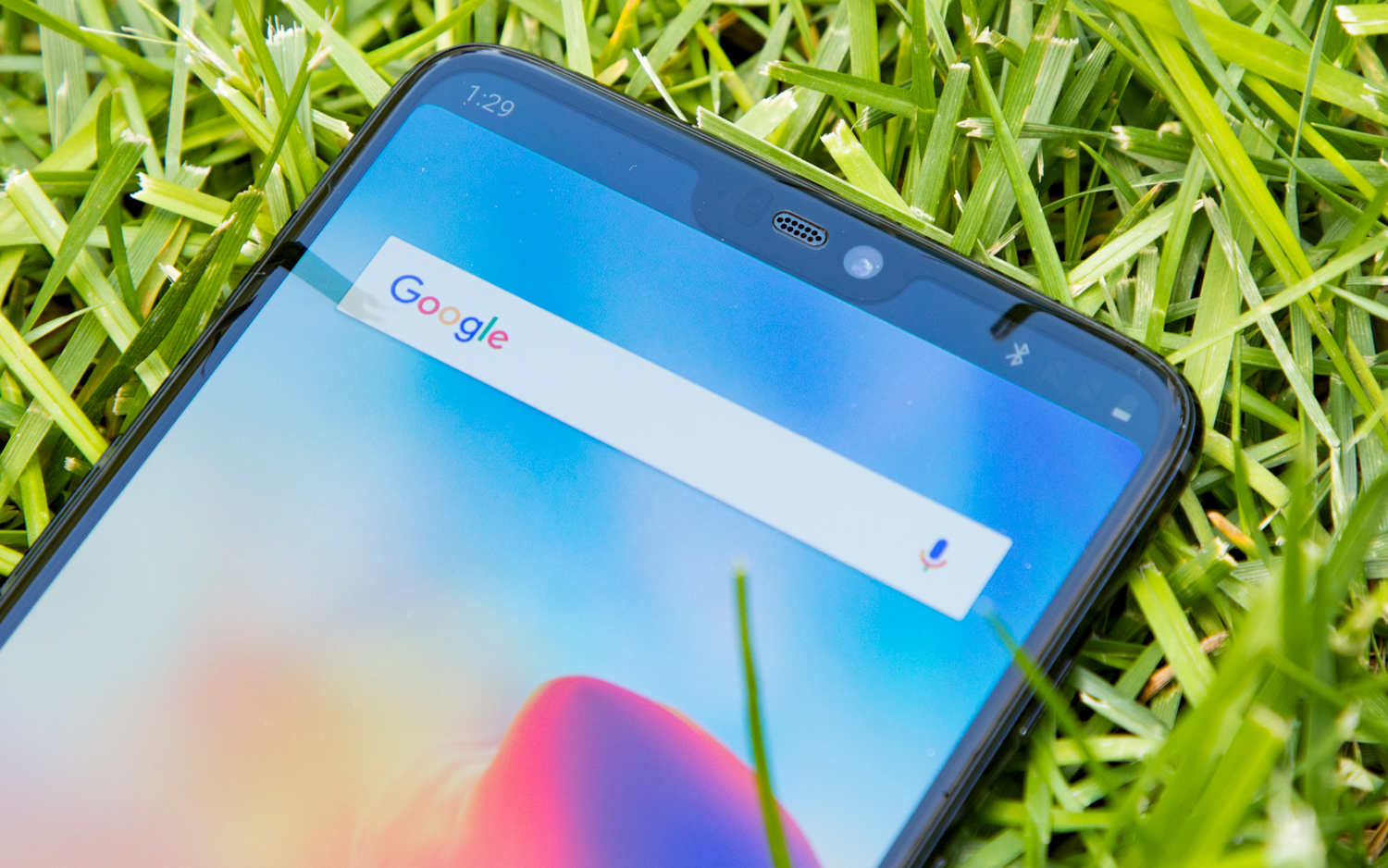
Without buttons, OnePlus' system works like this: You swipe up to go home, and swipe up and hold to view recent apps, just like the iPhone X. To go back, you swipe up from either the left or right side. I was able to get the hang of it in no time at all, and it’s quickly become my preferred way to use the OnePlus 6.
In some ways, OnePlus' gestures are brilliantly simple. Besides freeing up screen space, they're also equally manageable for left- and right-handed users alike, because you can go back from either corner. Although there's no shortcut to open the app drawer from any screen, that doesn't seem to be a terribly costly omission. A bigger MIA feature could be the lack of a suggested apps list when you're thumbing through your recents, but that's a new capability special to Android P that many users probably won't notice missing.
I was able to get the hang of the OnePlus 6's gestures in no time at all, and it's quickly become my preferred way of using the device.
No, the biggest problem with OnePlus' system is that it doesn't give Google Assistant a home, because there's no button to long press. Of course you can still access it with "OK Google," but that won't help much if you need to be silent and use the keyboard to type in queries. A few years ago, this might have been inconsequential, but the Assistant has morphed into a powerful asset for users that's becoming increasingly inseparable with Android.
Getting rid of a major way to access Google Assistant will surely rub some OnePlus 6 owners the wrong way, but perhaps the company can address that in an update. If not, the traditional three-button navigation remains available, and is still the default setting out of the box.
MORE: Android Tips to Unlock Your Phone's Full Potential
In addition to gestures, OnePlus has expanded its Gaming Mode beyond notification management with a handful of new features. Users can now prioritize data bandwidth for the game they're playing — forcing background processes and apps to take a breather to allow more throughput for multiplayer titles. There's also Gaming Battery Saver, which adjusts performance in apps that use the Unity Game Engine to prioritize longevity, rather than graphics.
Finally, Face Unlock returns after its introduction in the OnePlus 5T. While it functions exactly the same as before, using it in these spring months has demonstrated that it's not the best way to reliably unlock the phone if you prefer sunglasses. Our OnePlus 6 never passed the shades test in my experience, though it remained fast as ever when I took them off. And because it operates entirely in 2D without a depth map, it's not as secure as Face ID and can be fooled with a photograph — meaning you still can't use it to authenticate payments.
Bottom Line
If it were $200 more expensive, the OnePlus 6 would still be worthy of a recommendation. But starting at $529, it's a steal.
OnePlus has put on yet another master class in giving buyers exactly the features they want, in a package that is refined, rather than fraught with gimmicks. The performance and display are first rate, the design is meticulous (if a little on the unwieldy side) and the battery, even though it's taken a step back regarding longevity, remains the quickest to get up and running. The software and gestures are thoughtful, and although the camera can t go toe-to-toe with the Pixel 2's, it more than suffices given what you're paying.

Even without some desirable extras, like wireless charging, expandable storage or water resistance, the OnePlus 6 gets closer to covering all the bases and fulfilling most buyers' demands than any other smartphone. And it does so while saving you hundreds compared with the $720 Galaxy S9, let alone even pricier handsets like the $849 Pixel 2 XL and the $999 iPhone X.
That makes it all the more disheartening that the OnePlus 6 comes with a major caveat — a familiar refrain that lets down the best unlocked devices on our shores: If you subscribe to Verizon or Sprint, you can't use it. If you count yourself among the lucky half of the nation that can, snag a device while they're in stock — OnePlus' devices have a nasty habit of selling out too quickly.
Credit: Shaun Lucas/Tom's Guide
Adam Ismail is a staff writer at Jalopnik and previously worked on Tom's Guide covering smartphones, car tech and gaming. His love for all things mobile began with the original Motorola Droid; since then he’s owned a variety of Android and iOS-powered handsets, refusing to stay loyal to one platform. His work has also appeared on Digital Trends and GTPlanet. When he’s not fiddling with the latest devices, he’s at an indie pop show, recording a podcast or playing Sega Dreamcast.
-
darkomaledictus Seems like a great phone, I use however my phone as a backup for essential data I don't want to store online and I want to keep on my person at all time. This means SD card, without it this phone is sadly not an option I can consider. The omission of a removable battery is sorely missed for long trips where a simple switch to a new battery means never downtime...Reply -
topvega No SD card and not available on Verizon and yet you are calling it a Flag Ship killer? Don't think so.Reply -
dl3cs3 1080 display...not a flagship killer......no IP water and dust resistant...not a flagship killer....no wireless charging on an all glass design??? not a flagship killer....no SD slot...not a flagship killer. People keep saying what an incredible value??? Its not worth a penny more than what they are asking...if they were to incorporate all of the things I mentioned, well then you have a phone pushing $1000.00. I will say its the best EVER mid-range phone.Reply -
deryn I think, given the various spyware scandals related to products from Chinese companies, and recent spyware found on OnePlus products in particular, it might be worth a mention in a review, no?Reply -
carlocaterer Reply
Agreed on both. And the SD can back up internal and vice versa. Data and Titanium backups go on SD, and a backup of the SD goes on Internal... either one conks out, no problemo.20988129 said:Seems like a great phone, I use however my phone as a backup for essential data I don't want to store online and I want to keep on my person at all time. This means SD card, without it this phone is sadly not an option I can consider. The omission of a removable battery is sorely missed for long trips where a simple switch to a new battery means never downtime...
Next... everyone giving up on removable battery, but this would make perfect flagship killer. A spare or extended battery instead of a charger is perfect at times, at others a combo battery n phone charger is.
A non removable battery can bring a multitasking phone to a standstill where nothing works, not even charging: try simultaneously charging, hotspotting or casting or streaming (+ obligatory wifi or BT and nfc or location on) as well as running browser or other app... Play Store and whatever else updating in the background... -
carlocaterer For those on t-mobile, this is one of only 2 other models that can pick up all new bands n carrier upgrades - besides Note n V30.Reply -
ridhimasane oneplus has been consistence in delivering the value for money phone from the beginning itself and now they come with the all new oneplus 6 which is ultimate beast and a gaint killer in the segment with all good features,design and strong specifications.Reply -
will.frame Verizon doesn't deserve this phone. They'd just pollute it with logos and bloatware.Reply
